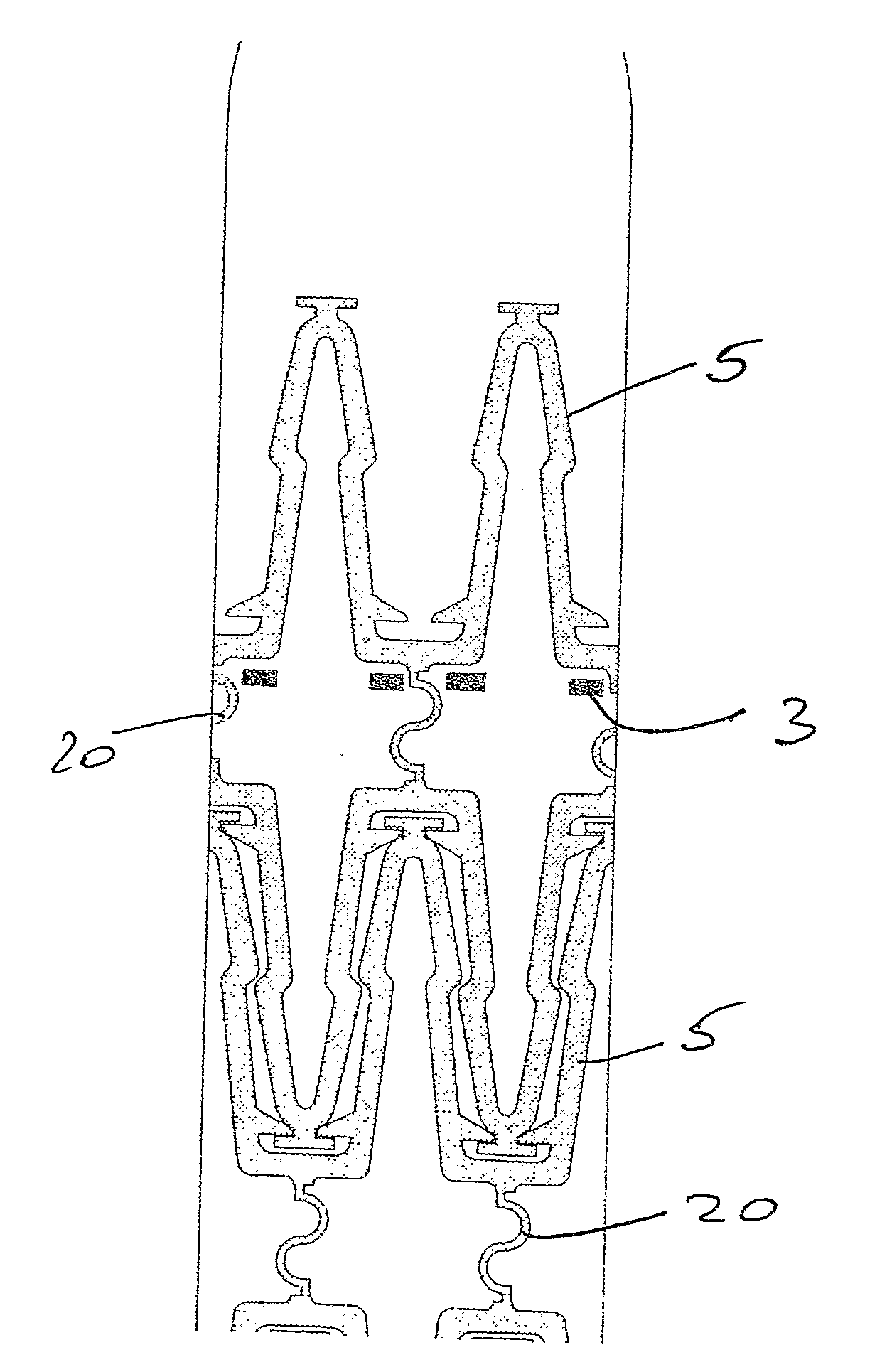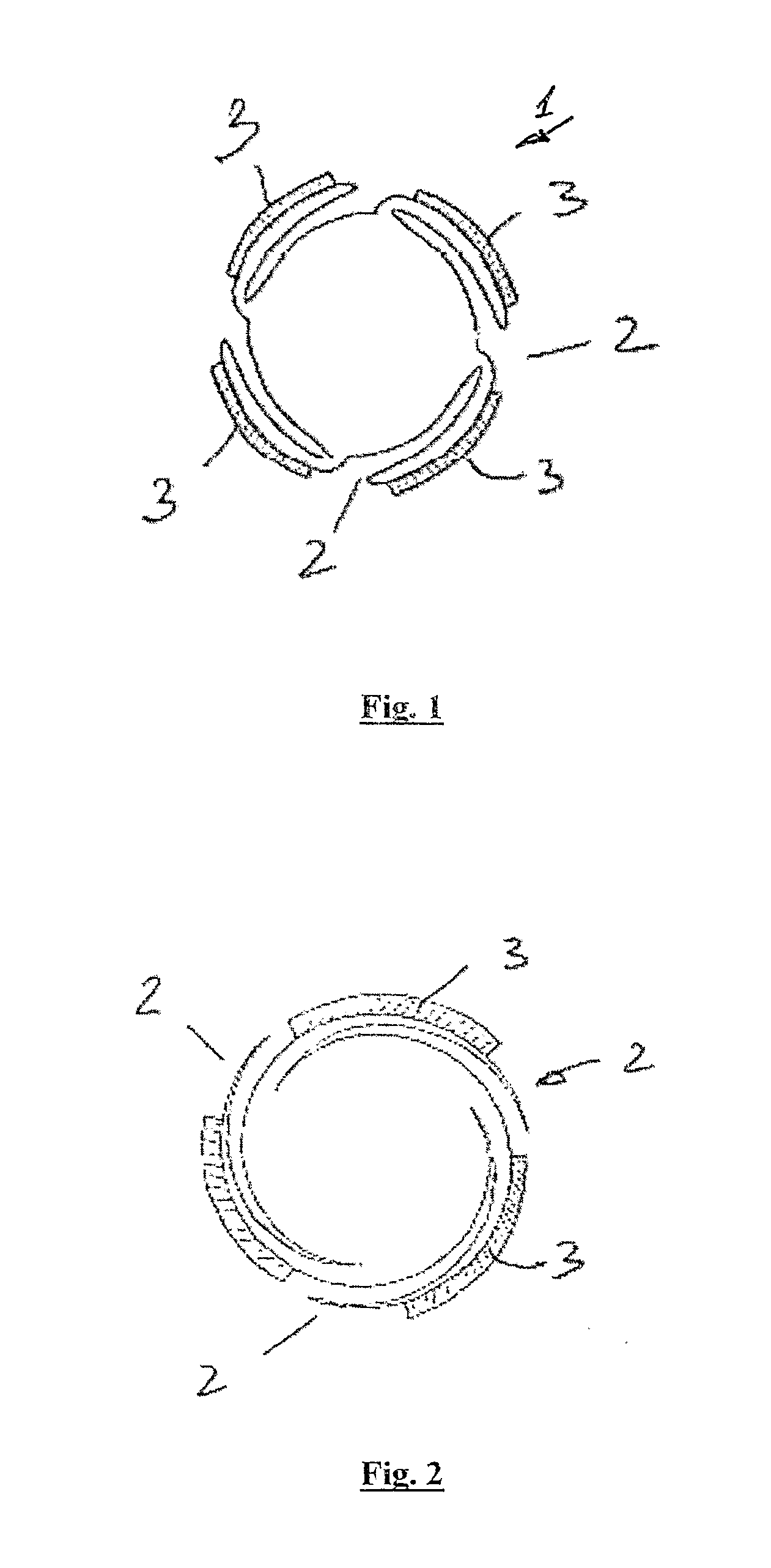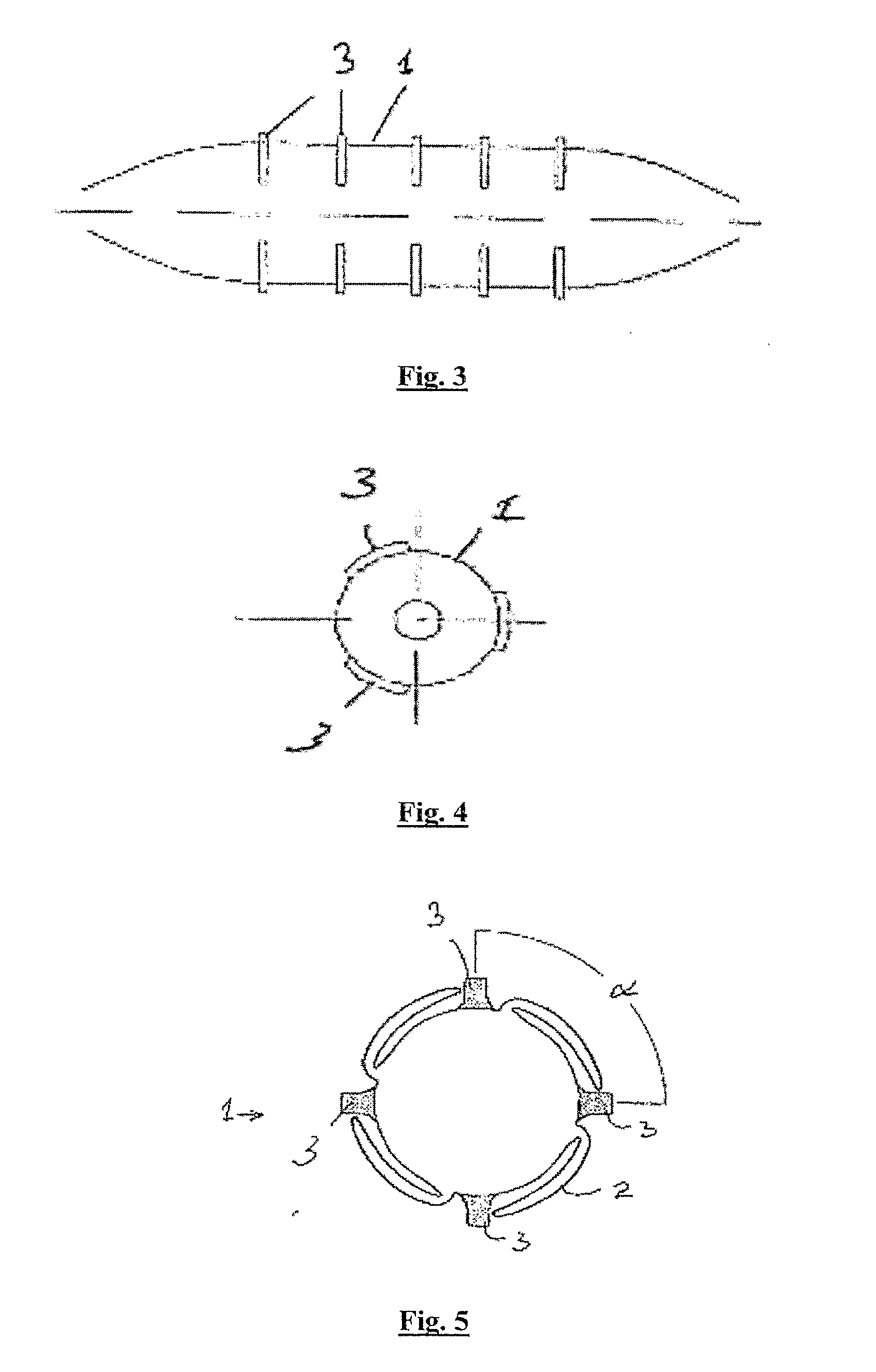Delivery system for multiple stents
a delivery system and stent technology, applied in the field of multiple stent delivery systems, can solve the problems of increasing radial compression, permanent deformation and/or fatigue failure, and achieving the effect of preventing undesirable axial movements
- Summary
- Abstract
- Description
- Claims
- Application Information
AI Technical Summary
Benefits of technology
Problems solved by technology
Method used
Image
Examples
Embodiment Construction
[0132]The invention provides a stent delivery balloon 1 to deploy a plurality of separate ‘mini-stents’5, which may or may not be interlocked / interlinked in the crimped configuration, into a bodily lumen at a controlled spacing. The balloon has formations for retaining the stents in a designed position, or for controlling the movement of the stents along their delivery balloon. The formations may comprise ridges 3, or retractable bridging elements, on the surface of the balloon 1 to control both the expansion of the multiple stents 5 from a single balloon 1 and also the coverage of the vessel wall following stenting.
[0133]In one case the ridges 3 are integral parts of the delivery balloon surface. They are designed and positioned in such a way as to engage with the mini-stents 5 and restrict their translation and rotation with respect to the balloon surface until the balloon 1 has been fully inflated. When the mini-stents 5 have been delivered to the correct locations on the vessel ...
PUM
 Login to View More
Login to View More Abstract
Description
Claims
Application Information
 Login to View More
Login to View More - R&D
- Intellectual Property
- Life Sciences
- Materials
- Tech Scout
- Unparalleled Data Quality
- Higher Quality Content
- 60% Fewer Hallucinations
Browse by: Latest US Patents, China's latest patents, Technical Efficacy Thesaurus, Application Domain, Technology Topic, Popular Technical Reports.
© 2025 PatSnap. All rights reserved.Legal|Privacy policy|Modern Slavery Act Transparency Statement|Sitemap|About US| Contact US: help@patsnap.com



